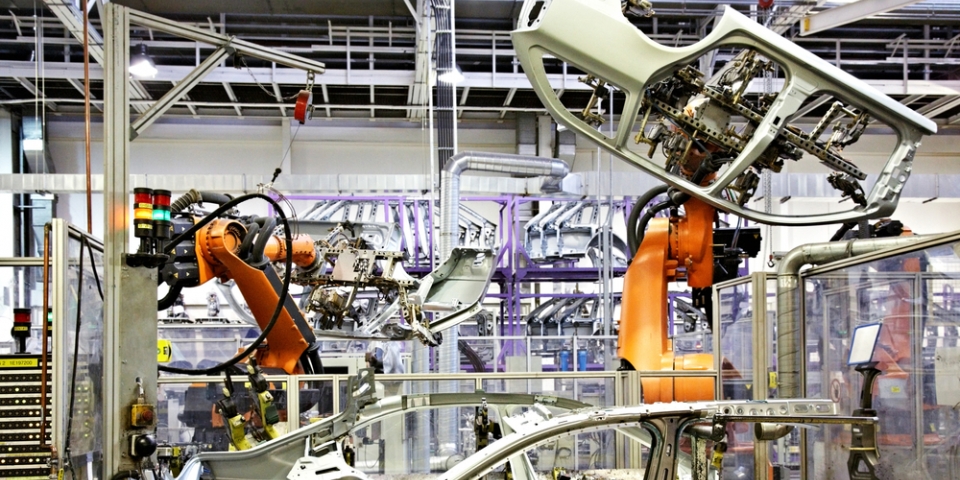


By Dr Martina Gerst, Standards & Conformity Assessment Advisor, EU SME Centre
In the second quarter of 2015, China’s State Council unveiled the country’s 10-year national plan, “Made in China 2025”.
The plan foresees to transform China’s manufacturing industry from “made in China” to “made by China”, focussing on product quality, sustainability, and developing brands to become a “world manufacturing power”. Chinese manufacturing currently accounts for about 20% of the world’s total and ranks first worldwide in terms of output in more than 220 categories among 500 major types of industrial products .
“Made in China 2025” aims to strengthen industrial competitiveness by upgrading the manufacturing sector to the next level of the value chain, taking advantage of a slowed-down economy – the often referred to “New Normal”. The State Council has established a fund of CNY 40 billion to push innovation, promote emerging industries, start-ups, and other projects. Besides improving quality, the plan aims to increase productivity and digitization through implementing advanced technologies to catch up with other countries.
The plan applies advanced ideas from Germany, Japan, the United States and the UK, among others, that have developed national plans to boost industrial competitiveness. It can be seen as picking up on the concept of Germany’s Industry 4.0 a “strategic initiative” of the German government that was adopted as part of the High-Tech Strategy 2020 Action Plan in November 2011.
The potential of the Industry 4.0 initiative is not only to provide ‘end-to-end’ transparency over the manufacturing process, facilitating optimized decision-making but engineering processes in a way enabling last-minute changes to production and deliver the ability to respond flexibly to disruptions and failures.
In addition, smaller suppliers may have bigger business opportunities through smart factories allowing individual customer requirements where even one-off items can be manufactured profitably.
Register on our website today and keep yourself updated with more China market insights. What’s in the “Made in China 2025” plan?
The plan aims to upgrade China’s manufacturing sector with highly advanced information technology (IT), making a big step forward in innovation and efficiency. Nine tasks have been identified as priorities:
1. Boosting innovation in manufacturing; 2. Promoting the integration of industrialisation and IT; 3. Strengthening the fundamental capacity of the industry; 4. Fostering the quality of China’s brands; 5. Enforcing green manufacturing; 6. Promoting innovations in 10 key sectors (listed below); 7. Restructuring the manufacturing sector; 8. Promoting service-oriented manufacturing and related industries; 9. Accelerating manufacturing progress by a greater opening up and internationalisation.
Besides the already massively expanded research budget of more than 234 billion Euro (2012) spent in China, the plan includes five key projects for the setting-up of manufacturing innovation centres, smart manufacturing, manufacturing base strengthening, green manufacturing, and high-end equipment innovation.
These priority tasks and the focus on internationalisation will result in more opportunities for European SMEs in the following sectors:
In order to realise the above mentioned tasks in the strategic sectors, the plan outlines specific support and related policies for example to deepen reform mechanisms or create a market environment of fair competition.
Strengthening support of fiscal and taxation policies for SMEs is also high on the agenda.
The support of SMEs shows the government’s efforts to support companies of all sizes to push for more innovation. China’s supply-side reform stresses the government’s support to encourage sustainable business growth through tax cuts and reforms, encouraging entrepreneurship and innovation.
In Europe, a huge number of innovations are actually created by SMEs. They are the backbone of the European economy, accounting for more than 98.7% of all European companies with about 92% working with fewer than 10 employees. A report of the German Kreditanstalt für Wiederaufbau (KfW) and three other European banks confirm that investment and innovation strengthens competitiveness.
What opportunities are there for European businesses?
More than 12% of European SMEs are already exporting their products for manufacturing to China . According to VDMA statistics of 2012, the overall exports of European machinery and equipment was about 34 billion Euro.
Concrete opportunities for EU SMEs can be found in the sectors defined in the “Made in China 2025” plan. For example in:
High-end equipment manufacturing Computer Numerical Control (CNC) Systems, specialized high-end machinery, ‘productronics’, cyber-physical systems (CPS), automation, machine tools, material handling, high-end components of machinery and specialized components, rail and other transportation, and marine engineering equipment.
Next generation IT Core internet equipment, mobile communications, new displays, integrated circuits etc.
New materials New functional materials and advanced structural materials.
The Centre is already supporting SMEs in this field and briefed a delegation of Austrian experts in January on how to tackle a changing China. A guide to stakeholders in the advanced materials sector can be downloaded from the Centre website at: http://www.eusmecentre.org.cn/press-article/advanced-materials-china-tackling-changing-china-austrian-smes
Clean energy vehicles Electric hybrid cars, electric cars, fuel cell cars, battery technology, components
Clean energy technology High-efficiency and energy saving technologies; recycling waste treatment
Training As the technologies listed above are not self-explanatory, it is expected that services, particularly maintenance and operations but also vocational training are sought after in China. To ensure sustainable innovation and the transformation of China’s manufacturing sector requires also a focus on a highly educated workforce with a strong emphasis on talent and skills.
Innovation The Chinese government is encouraging what has been previously called ‘indigenous innovation’ (part of a profound effort by the Chinese leadership to advance the country from its status as a prolific, but low-end producer to a technology leader) for Chinese local products and services. There is a great demand for technology transfer from abroad in the high-end machinery sector especially. EU SMEs could target Chinese companies with the necessary manufacturing capabilities and provide technology transfer services to them. Building such partnerships can be a good market entry strategy for EU SMEs. For more on the opportunities in China’s machinery sector, see: http://www.eusmecentre.org.cn/report/machinery-sector-china
Made in China 2025 calls for further marketization, as well as strengthening intellectual property rights for small and medium-sized enterprises, which should increase their ability to compete.
SMEs exporting their technology to China that have approached the Centre mostly perceive the lack of uniformity in the regulatory framework, such as different implementation rules on central and provincial level, as challenge as well as the protection of intellectual property (IP) that is key in the area of high-tech. To learn more about it, read the Centre’s report Exporting Goods, Services and Technology to the Chinese Market: http://www.eusmecentre.org.cn/report/exporting-goods-services-and-technology-chinese-market
Related Content